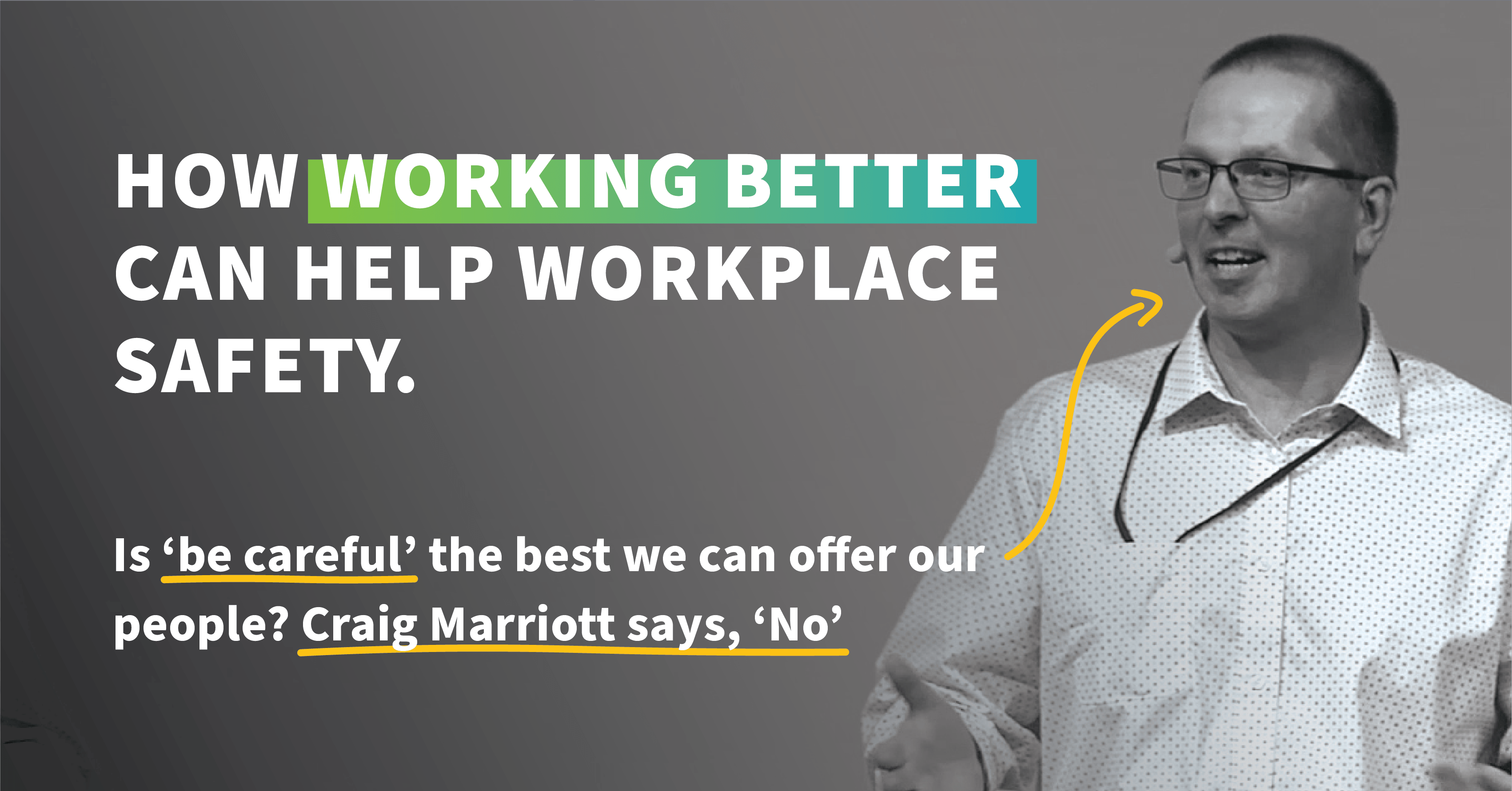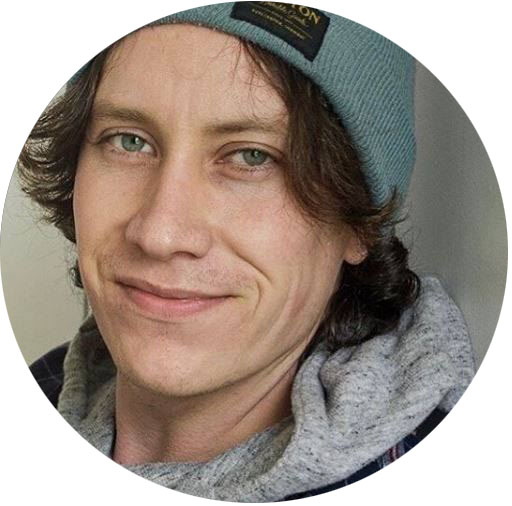GM of Health, Safety, Environment and Quality at First Gas, Craig Marriott has made it his mission to push the boundaries of safety management, asking the question, “Is there a better way to do things, even if it means breaking the rules?”
It was just over 15 years ago when Craig had a lightbulb moment that has affected his career ever since. In a training workshop, he realised safety management is a bit like a Rubik’s Cube – you can solve it a variety of ways.
He spoke last year at the Safeguard National Health and Safety NZ Conference about ‘Challenging the Safety Quo’ – a concept he’s explored in-depth in his book with the same title
He argues that organisations should be focusing less on fixing worker behaviour, and more on fixing working conditions. It’s about equipping workers with the tools, resources and agency to make smart decisions regardless of the situation, so they can work successfully, with safety as a natural by-product.
Here’s how organisations can do just that.
Get fresh H&S insights weekly
Look at health and safety with fresh eyes
Before moving to New Zealand, Craig was working for safety engineering consultancy Advisian in the UK – writing safety cases for complex and very high-risk activities building submarines for managing radioactive waste. While his team was experienced in those high-risk areas, they had gaps in their knowledge around conventional, hard-hat-and-boots health and safety.
In the spirit of continuous improvement, they arranged an IOSH-facilitated safety course. When the course facilitator introduced some of the familiar theories of working, the team “ripped them apart.”
That got Craig thinking.
“What is it that allowed us to see the flaws so quickly that other people hadn’t been able to see? I realised it’s because we came at this from a different perspective from conventional health and safety people,” he explains.
“We identified those areas where we could have major hazards and incidents that could kill multiple people, and we focused exclusively on those things at the exclusion of everything else.”
If you’ve been in traditional health and safety roles for a long time, it’s not quite as easy to flip your perspective. Sometimes you need something that helps trigger the switch – and that’s where the next principle comes in.
Move from fixing safety to optimising work
Fast-forward a couple of years and Craig has now transitioned into a more conventional health and safety management role at First Gas: “There’s not that many nuclear facilities to write safety cases for in New Zealand,” he laughs.
But that didn’t stop him from questioning the way things were done.
“Life-saving rules. Recording and reporting on lost-time injury frequency rates. Zero harm mantra. And this obsession with ticking boxes and making sure we do what it says in the procedure.”
Craig discovered there was a consistent theme running through accident and incident investigations right across the business – accidents are caused by human error. To expect humans to never make mistakes seems counterintuitive to Craig.
“Rather than trying to retrain, refresh or remind the worker, wouldn’t we be better to optimise the work conditions?”
Craig recommends organisations stop trying to ‘fix safety’, and instead aim to ‘optimise the work’.
“Only when you have everything in place will you see safety emerge from the system of work. Because safety is the outcome of that process,” he explains.
Give up the illusion of control
The further away we are from the workplace, the less control we have over safety, and Craig says organisations need to realise this, so they can let go – a critical part of optimising work. That takes:
A deep understanding of the work
Involving your workforce in developing solutions
The right mindset
Here’s how Craig and his team are working to improve in these areas at First Gas.
Understanding the work
“At our weekly team meetings, we have a conversation about the job and ask questions like, ‘Where did things go well? Where were there frustrations, difficulties, or surprises? If something went wrong, how did we adapt?’” Craig explains. “People are much more comfortable talking about their work than they are their safety.”
This approach helps him understand the work and unearth innovations or opportunities to improve.
“If we’ve got capable people, the right resources to do the job, we’ve optimised the environment as far as we can for workers, and we give them the right systems and tools, they should be able to deliver the job successfully. If they can do that, then they should be safe.”
Workforce involvement
Sub-optimal working conditions are created by different pressures – someone hasn’t turned up for work, schedules change, or a tool isn’t available. How organisations respond to those pressures can also vary.
“It seems to me there are three ways we can respond to that variability: 1) dampen undesired pressures causing problems, 2) capture innovative and useful changes that can be used in the future, or 3) accept variation as normal.”
The third response requires more than just the workforce speaking up – organisations need to trust that their workers can make the decisions in real-time.
“If we spend all of our time trying to control work with procedures, then you robotomise the workforce and they can’t make those decisions on the fly anymore.
“We need to trust in their expertise and their knowledge. Variability is crucial to successful work – it’s part and parcel of doing the work well.”
Mindset shift
First Gas has chosen to throw away things like life-saving rules and implement values-based principles instead.
Craig elaborates: “We trust in the expertise of our team to deliver successful work so we can redistribute the decision-making closer to the control of the workplace.”
Reimagining the role of safety in the workplace
For Craig, this way of thinking isn’t rocket science, but something as simple as working better can have an astronomically positive effect on workplace safety.
“Our health and safety team has reimagined our role in the business, and it’s not to manage safety, maintain compliance with the law or implement health and safety management systems. It’s to help the business deliver successful work.”
To make that shift and build an engaged and competent workforce that has the same interests as you, “It’s helpful to have a completely different guiding idea about what you’re there to achieve,” he says.
Craig doesn’t agree with some professional opinions that New Zealand is “no good at health and safety” after incidents like Pike River. He thinks the country is well-placed to do safety differently – and that the world is looking in New Zealand’s direction to lead the way.
“I don’t think traditional health and safety approaches suit New Zealand – they squash creativity and innovation and wrap things around rules and compliance.
“There’s an opportunity not to catch up with other countries, but leapfrog them.”
Key takeaways
Principle 1: look at health and safety with fresh eyes; challenge traditional health and safety management and look for different perspectives and new opportunities.
Principle 2: move from fixing safety to optimising work; workplace safety is the outcome of successful work.
Principle 3: give up the illusion of control by understanding the work and encouraging workplace involvement to support a mindset shift approach.
Accidents and incidents aren’t the fault of workers, rather the consequence of sub-optimal working conditions.
The role of health and safety in the workplace isn’t to manage, maintain or implement, it’s to help the business deliver successful work.
Note: Any and all research within this article comes from the speaker's perspective/ presentation at the Safeguard National Health and Safety Conference in May 2019.
Whether you’re in the market for an out-of-the-box solution or an enterprise-level system with all the bells and whistles, ecoPortal has an option for your business. Try a demo or get in touch with the team at ecoPortal








